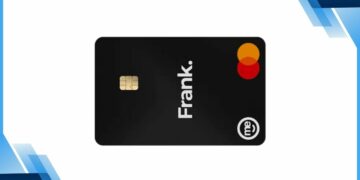Choosing the right credit card for you

Selecting the right credit card is not just about spending; it’s about managing your finances wisely. Whether you’re looking to earn rewards, reduce costs, or build credit, understanding how to pick the best credit card for your needs in Australia is crucial. This comprehensive guide will walk you through the steps to make an informed decision that aligns with your financial goals.
Assessing your financial needs
Before diving into the ocean of credit card options, take a step back to evaluate your financial situation. Begin by assessing your income, monthly expenses, and financial objectives. Consider the following questions:
- What are your main spending categories (e.g., groceries, fuel, dining out)?
- Are you looking to pay off debt, or are you interested in earning rewards?
- How often do you travel, and could you benefit from a travel rewards card?
Understanding your spending habits and financial goals will help you narrow down the type of credit card that would be most beneficial for you.
Understanding different types of credit cards
Credit cards are versatile financial tools that come in various forms to cater to different needs and financial situations. Whether you’re aiming to maximize rewards or manage debt efficiently, understanding the nuances of each type of card can help you make an informed decision. Let’s delve deeper into the most common types of credit cards available and their potential benefits for your financial lifestyle.
Rewards Cards
Rewards cards are designed for users who can pay off their balances in full each month to avoid interest charges. These cards offer rewards in the form of points, cashback, or travel miles based on the amount you spend.
- Points: Typically, these cards award points for every dollar spent, which can be redeemed for goods, services, or travel bookings. The key to maximizing value with these cards is to use them for all your regular spending and then pay off the balance each month.
- Cashback: Cashback cards offer a percentage of your spending back in the form of cash. This can vary from 1% to 5% of your purchases, depending on the card’s terms and the spending category—such as groceries, fuel, or dining.
- Travel Miles: If you travel frequently, a card that offers travel miles could be beneficial. These cards often come with additional travel perks such as airport lounge access, priority boarding, and no foreign transaction fees.
Choosing the right rewards card involves understanding where you spend your money most frequently and selecting a card that offers the best returns on those purchases.
Balance Transfer Cards
For individuals struggling with existing credit card debt, balance transfer cards offer a breath of fresh air. These cards typically feature low introductory interest rates—sometimes as low as 0%—for a set period, often between 6 to 18 months. Here’s how they can be beneficial:
- Debt Consolidation: By transferring balances from multiple cards with high-interest rates to one card with a lower rate, you can simplify your payments and reduce the amount of interest you accrue.
- Interest Savings: The introductory period allows you to pay down your balance without accumulating additional interest, which can be a crucial strategy for reducing your overall debt more quickly.
It’s important to check the balance transfer fees and the standard interest rate after the introductory period ends to ensure it aligns with your debt repayment goals.
Secured Credit Cards
Secured credit cards are a viable option for building or rebuilding credit. They require a security deposit up front, which typically becomes your credit limit. This deposit acts as collateral for the card issuer and reduces the risk of non-payment, which is why these cards are more accessible to those with poor credit histories or no credit at all.
- Credit Building: Regular use and timely payments of a secured card can help build your credit score, as most issuers report your activity to the credit bureaus.
- Lower Risk: Because of the security deposit, these cards often have lower fees and interest rates than unsecured cards for bad credit.
Low-Interest Cards
Low-interest credit cards are ideal for those who occasionally carry a balance from month to month. These cards offer lower interest rates compared to typical credit cards, which can help manage borrowing costs more effectively.
- Cost-Effective: If you face a month where full payment isn’t possible, a low-interest card will accrue less interest than a standard credit card, making it easier to manage your debt without it spiraling out of control.
- Budget Flexibility: For unexpected expenses that require a longer repayment period, low-interest cards offer a buffer with minimal financial repercussions.
When choosing any credit card, consider how the benefits align with your spending habits and financial strategy. For example, a rewards card is most beneficial for someone who can avoid interest by paying balances in full, while a balance transfer card is better suited for someone looking to manage existing debt. Always weigh the costs against the benefits to ensure that your new credit card becomes a valuable tool in your financial arsenal.
Interest rates and associated fees
One of the critical aspects of choosing a credit card is understanding the interest rates and fees involved. The Annual Percentage Rate (APR) is particularly important if you plan to carry a balance. Consider additional fees such as:
- Annual fees: Does the card charge a yearly fee? If so, do the benefits outweigh this cost?
- Foreign transaction fees: Essential for those who travel or shop online from international retailers.
- Late payment and cash advance fees: Understanding these can help you manage costs and avoid unnecessary charges.
Always read the fine print to fully understand the fee structure and interest rates, which can significantly affect the cost of having a credit card.
Benefits and rewards
When considering rewards cards, it’s crucial not just to focus on accumulating points but also to ensure that the points align with your lifestyle and provide real value. A thorough evaluation of the rewards program is essential to making the most of your credit card.
Conversion Rates and Redemption Options
The real value of any rewards card lies in how effectively you can use the points you accumulate. Different cards have different conversion rates for points to rewards, and it’s important to understand these rates to get the best deals. For instance, points might be more valuable when redeemed for flights or hotel stays compared to when exchanged for shopping vouchers or merchandise. By understanding how your points convert, you can plan your spending and redemptions to maximize the value you receive.
Bonus Categories
Many rewards cards offer enhanced earning potential on specific spending categories. For example, some cards may provide higher reward rates for expenses related to dining, entertainment, or groceries. This feature can be particularly advantageous if it aligns with your regular spending habits. If you frequently dine out or spend money on entertainment, choosing a card that offers extra points in these categories can significantly boost your rewards balance.
Sign-up Bonuses
Sign-up bonuses are another critical aspect to consider when evaluating rewards cards. Many issuers offer attractive bonuses that can be unlocked when you meet a minimum spending requirement within the first few months of opening your account. These bonuses can be a fast track to accumulating a large number of points or cashback, potentially worth hundreds of dollars. However, it’s important to ensure that the spending required to achieve the bonus aligns with your budget to avoid overspending just to earn the rewards.
Security and protection
With the rise in digital banking and online fraud, having robust security features on your credit card is essential. Features to look for include:
- Fraud protection: Ensure the card offers zero liability on unauthorized transactions.
- EMV chips: These chips provide better security than magnetic strips and are standard on Australian cards.
- Virtual card numbers: Useful for safeguarding your details when shopping online.
Comparing options and applying
Utilize credit card comparison sites like Finder.com.au or Canstar to compare different credit card features side by side. Consider not only the rewards and benefits but also user reviews and expert ratings.
When applying, ensure your credit score aligns with the card’s requirements. Applications can impact your credit score, so choose wisely and only apply for a card when you meet the eligibility criteria.
Managing credit card debt
Understanding how to manage your credit card effectively is as important as choosing the right one. If you tend to carry a balance, consider strategies like using balance transfer offers to reduce interest charges, and always aim to pay more than the minimum payment to reduce your principal balance quicker.
Understanding Credit Card Regulations in Australia
Navigating the regulatory landscape of credit cards in Australia is essential for every cardholder. Understanding these regulations can help you make more informed decisions and ensure you are fully aware of your rights and obligations. The Australian Securities and Investments Commission (ASIC) provides comprehensive guidance on the rights of credit card users and the responsibilities of credit card issuers.
For detailed and up-to-date information on credit card regulations in Australia, including changes following recent financial sector reforms, visit ASIC’s official website. Here you’ll find resources that explain everything from how interest rates are calculated to how you can dispute charges and report unfair practices. Familiarizing yourself with these regulations can protect you from potentially predatory practices and help you manage your credit card more effectively.
Choosing the right credit card involves careful consideration of your financial situation, understanding different card types, and comparing what each card offers in terms of fees, rates, rewards, and security features. By taking the time to research and select the card that best fits your needs, you can leverage credit to your advantage, whether it’s building credit, earning rewards, or managing debt. Remember, the best credit card for you is one that complements your financial goals and enhances your financial well-being.
Read More Maximize your credit card rewards: Effective strategies and tips
Related content
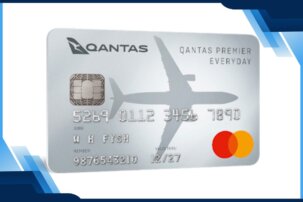
Qantas Premier Everyday Credit Card: earn travel rewards and enjoy perks

Maximize your credit card rewards: Effective strategies and tips
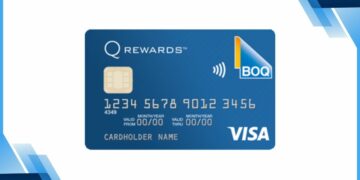
How to Apply for Your Blue Visa Credit Card
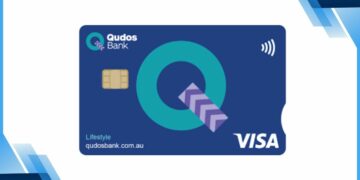
How to Apply for Your Lifestyle Credit Card
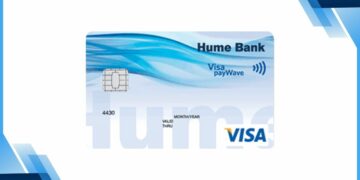
How to Apply for Your Hume Clear Visa Credit Card
